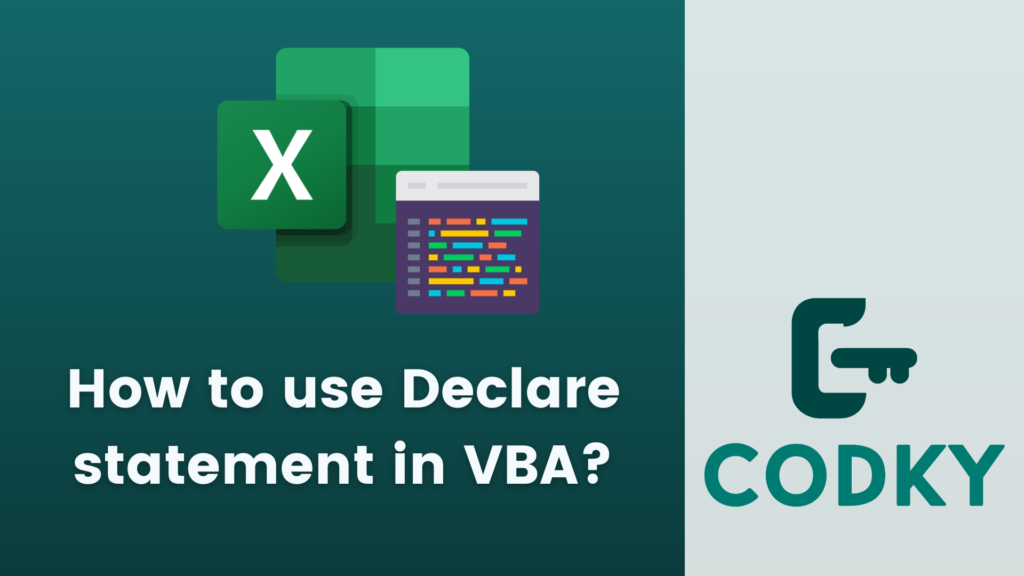 The Declare statement in VBA (Visual Basic for Applications) is used to call external procedures or functions that are written in another programming language, such as C, C++, or certain Windows API functions. These external procedures are usually contained in DLL (Dynamic Link Library) files.
Here’s a basic guide on how to use the Declare statement in VBA:
The Declare statement in VBA (Visual Basic for Applications) is used to call external procedures or functions that are written in another programming language, such as C, C++, or certain Windows API functions. These external procedures are usually contained in DLL (Dynamic Link Library) files.
Here’s a basic guide on how to use the Declare statement in VBA:
Syntax of Declare Statement
The general syntax for the Declare statement is as follows:VBA
Or for a subroutine
Declare Function Name Lib "Library" [Alias "AliasName"] (Arguments) As ReturnTypeVBA
Where:
Declare Sub Name Lib "Library" [Alias "AliasName"] (Arguments)- Function or Sub specifies whether it is a function (which returns a value) or a subroutine (which does not return a value).
- Name is the name you want to use in your VBA code to call this function or subroutine.
- Lib “Library” specifies the name of the DLL file that contains the procedure.
- Alias “AliasName” (optional) specifies the actual name of the procedure in the DLL if it is different from Name.
- Arguments are the parameters you pass to the function or subroutine, with their data types.
- ReturnType is the data type of the value returned by the function.
Example of Using Declare Statement
Let’s say you want to use the Windows API function MessageBox, which is contained in the user32.dll:VBA
In this example:
Declare Function MessageBox Lib "user32" Alias "MessageBoxA" ( _
ByVal hWnd As Long, _
ByVal lpText As String, _
ByVal lpCaption As String, _
ByVal uType As Long) As Long
Sub ShowMessage()
Call MessageBox(0, "Hello, World!", "My Message Box", 0)
End Sub
- MessageBox is the name used in VBA to call the function.
- Lib “user32” indicates that the function is in the user32.dll.
- Alias “MessageBoxA” is the actual name of the function in the DLL.
- The function takes four arguments: a window handle, a text message, a caption, and a message box type, all of which are required by the original Windows API function.
- The function returns a Long integer value.
Points to Consider
- DLL Availability: Ensure that the DLL file is available on the system where your VBA code will run.
- 32-bit vs. 64-bit Compatibility: Be aware of the compatibility between 32-bit and 64-bit systems. If you’re using a 64-bit version of Office, you may need to modify the Declare statements for compatibility.
- Security: Calling external procedures can potentially expose your system to risks if not done correctly. Only call procedures from trusted sources.
- Data Types: Make sure that the data types in your Declare statement match those expected by the external procedure.






